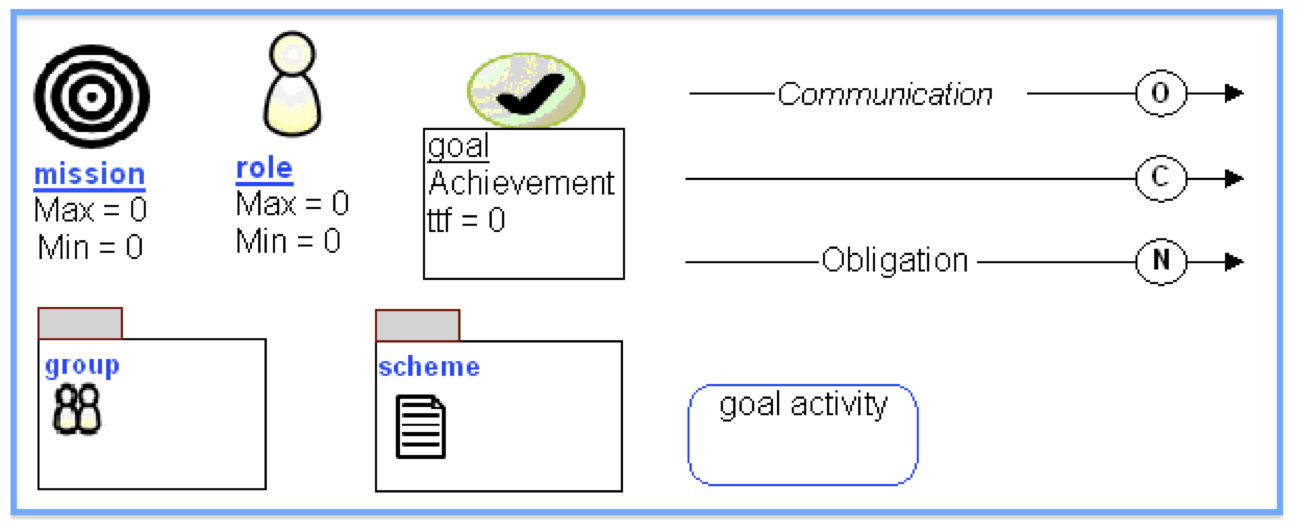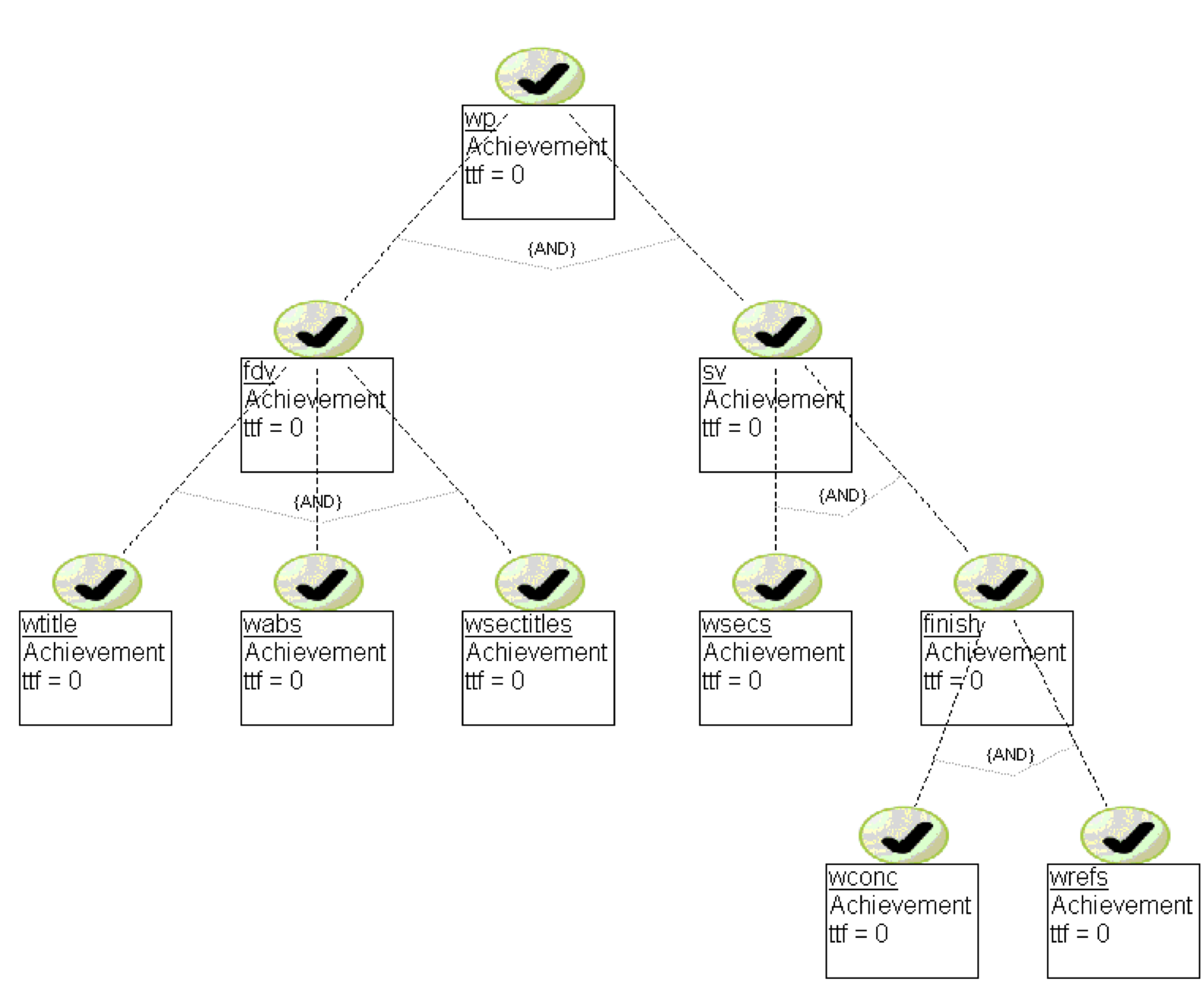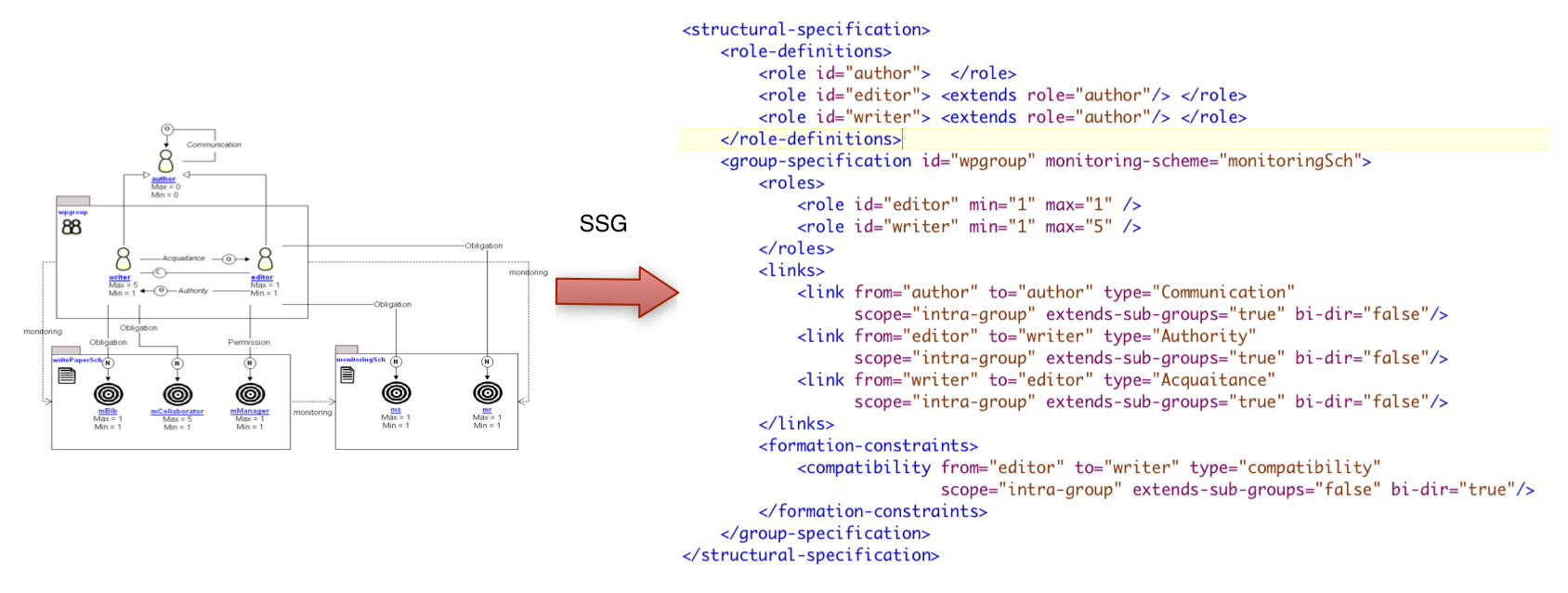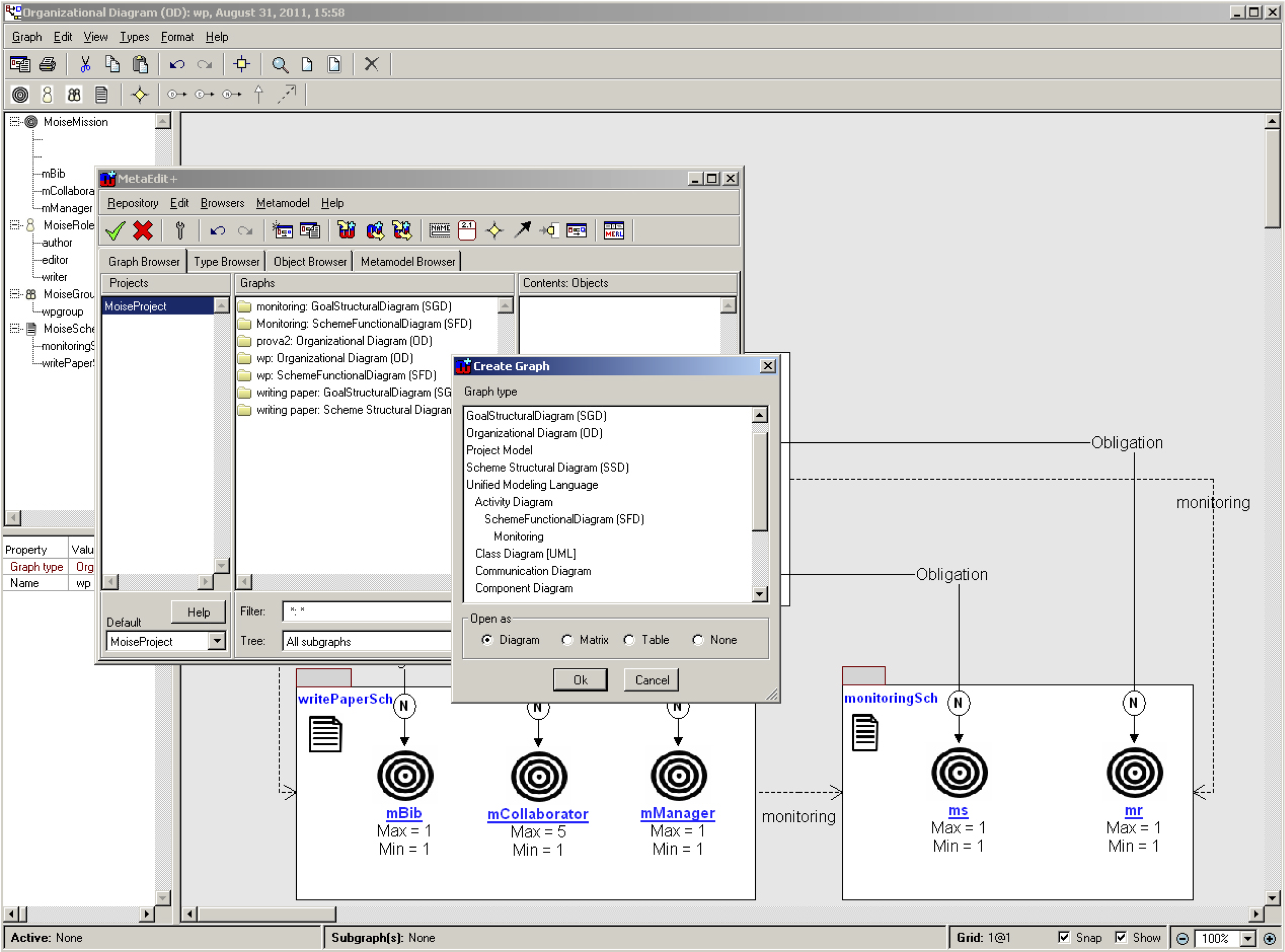MoT: An organizational design tool
MoT (Moise+
Tool) is a specific CASE tool developed for supporting design
of Multi-agent organization. It is based on a specific notation
representing the fundamental concepts of an organization. MoT, also,
provides automatic Moise+ code generation. It has been developed
as an instance of a meta-CASE tool (Metaedit+) and it is actually at
the first release.
CONTENTS
Notation
MoT is based on the notation element shown in Fig.1.
Diagrams
In MoT it is possible to realize four kind of diagrams.
Code Generation
MoT is able to produce automatically Moise+ code starting from the previous diagrams. Particularly, the XML portion code concerning the Moise+ Structural and Normative Specification respectively coming from the elements designed in the Organizational Diagram.
The Moise+ Functional Specification, instead, coming from the analysis of the elements designed in the Goal Functional Diagram and in the Scheme Structural Diagram. Fig. 6 shows the portion of structural specification generated by the analysis of the OD of the writing paper example.
Documentation
Software
External Links
CONTENTS
Notation
MoT is based on the notation element shown in Fig.1.
- Role - An agent Role is depicted as a sticky man. It is caracterized by three attributes: the role name and the multiplicity of the role in the organization rapresented by the min and max attributes.
- Group - A Group is represented by means of a package with a sticky men icon. It may contain several structural elements (Roles) and other grouping elements (sub-groups). The root group represents the entire organization.
- Mission - A mission in MoT is graphically depicted as a dartboard.
- Social Scheme - A Scheme is modeled by means of a package with a little sheet icon, where missions can be grouped.
- Goal - A Goal is
graphically depicted as circle with a check. Each goal element is
characterized by a name and by a collection of attributes. The GoalType
propriety represents the kinds of goal namely achievement and
maintenance and the ttf
attribute prescribs the time requested for fulfilling the goal.
- Norm - A Norm it is represented as an arrow with a circle containing the letter 'N'. It is characterized by means of a label showing the type (obligation or permission).
- Organizational Link - It is represented as an arrow with a circle containing the letter 'O'. It can be characterized by means of a label showing the type (authority, acquaintance and communication).
- Compatibility Link - It is represented as an arrow with a circle containing the letter 'C'.
Fig.
1: The Notation for MoT
Diagrams
In MoT it is possible to realize four kind of diagrams.
- The Organizational Diagram (OD) is an extended UML class diagram for designing the structural and normative aspect of an organization. The OD focuses on Moise+ elements such as Roles, Groups, Missions, Schemes and different kinds of relationships. Fig. 2 shows the Organizational Diagram for the classical example of Writing Paper organization decribed in the Moise+.
- The Scheme Structural Diagram
(SSD) allows to design more in detail the structure of the Social
Schemes in terms of goals and missions. Fig. 3 shows a portion of
the SSD for the write paper example.
- The Goal Structural Diagram provides a goal analysis by dividing goals into subgoals through an AND or OR decomposition (see Fig.4).
- The Goal Functional Diagram represents
the
behavioral view of the organization, how the task/activity related
to each subgoal must be executed in order to fulfill the scheme
root goal. Fig. 5 shows the Goal Functional Diagrams built for the
wp goal of the Writing Paper organization.
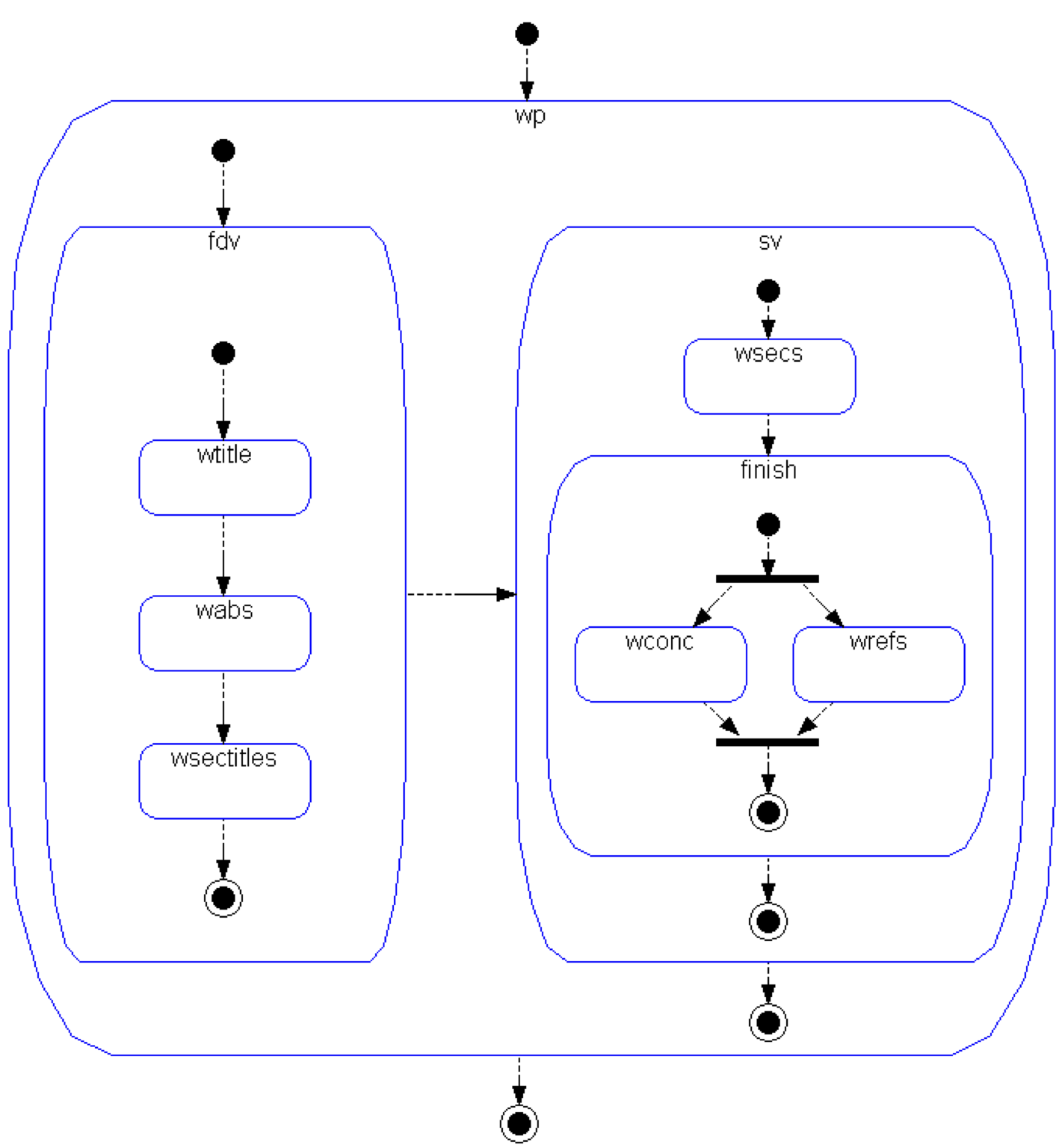
Fig. 5: Goal Functional Diagram of the writing paper example.
Code Generation
MoT is able to produce automatically Moise+ code starting from the previous diagrams. Particularly, the XML portion code concerning the Moise+ Structural and Normative Specification respectively coming from the elements designed in the Organizational Diagram.
The Moise+ Functional Specification, instead, coming from the analysis of the elements designed in the Goal Functional Diagram and in the Scheme Structural Diagram. Fig. 6 shows the portion of structural specification generated by the analysis of the OD of the writing paper example.
Documentation
- Massimo Cossentino, Carmelo Lodato, Salvatore Lopes, Patrizia
Ribino, Valeria Seidita and Antonio Chella. Designing MAS
Organizations with the support of a UML CASE tool. In Proc. of the
9th European Workshop on Multi-agent Systems (EUMAS 2011),
Maastricht (The Netherlands). Nov. 2011. (pdf)
- M. Cossentino, C. Lodato, S. Lopes, P. Ribino, V. Seidita, A. Chella. A UML-Based Notation for Representing MAS Organizations. WOA 2011Dodicesimo Workshop Nazionale "Dagli Oggetti agli Agenti". Rende (CS), Italy. Jul. 2011.(pdf)
- Brief Tutorial (pdf).
Software
External Links

